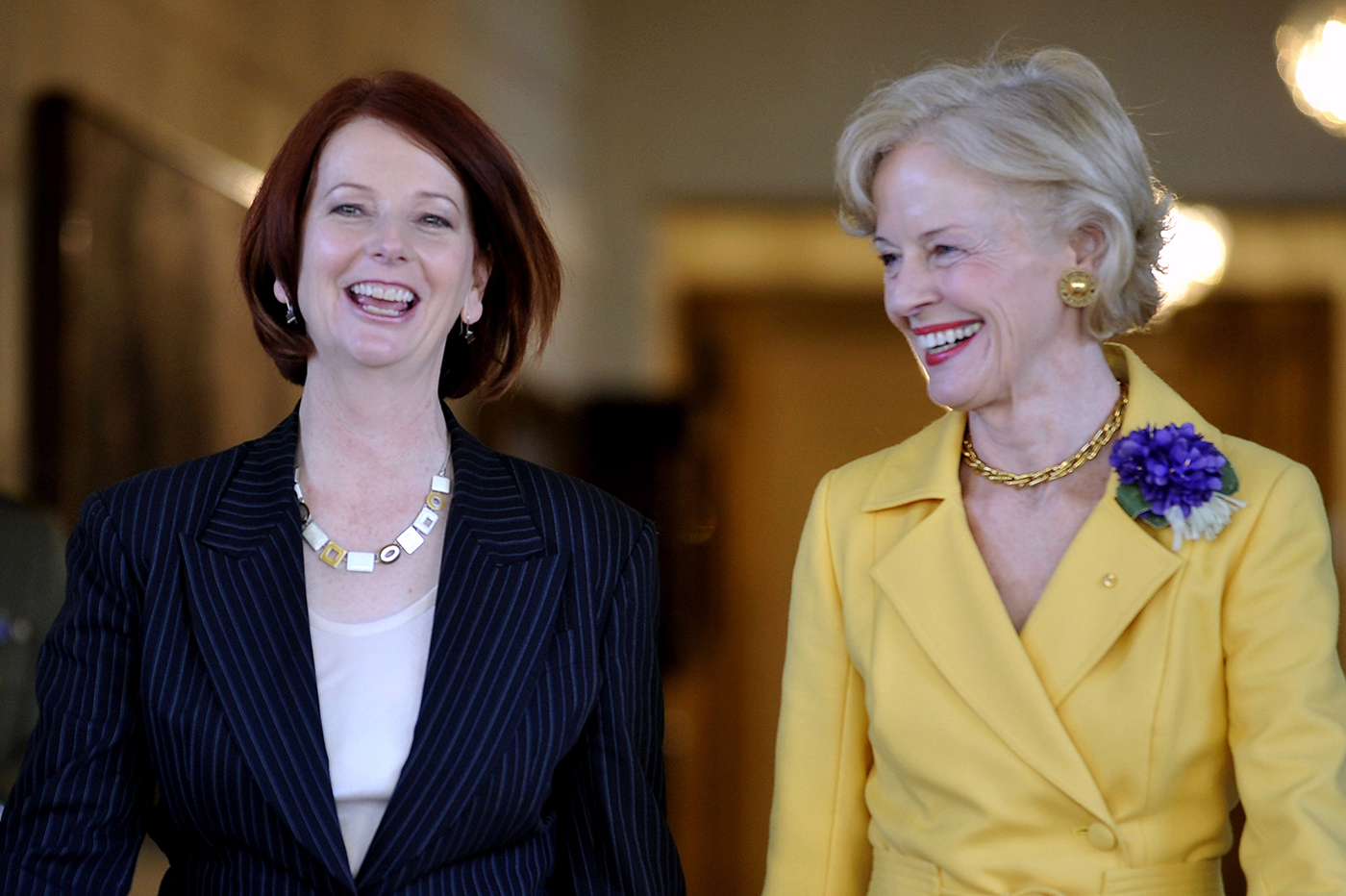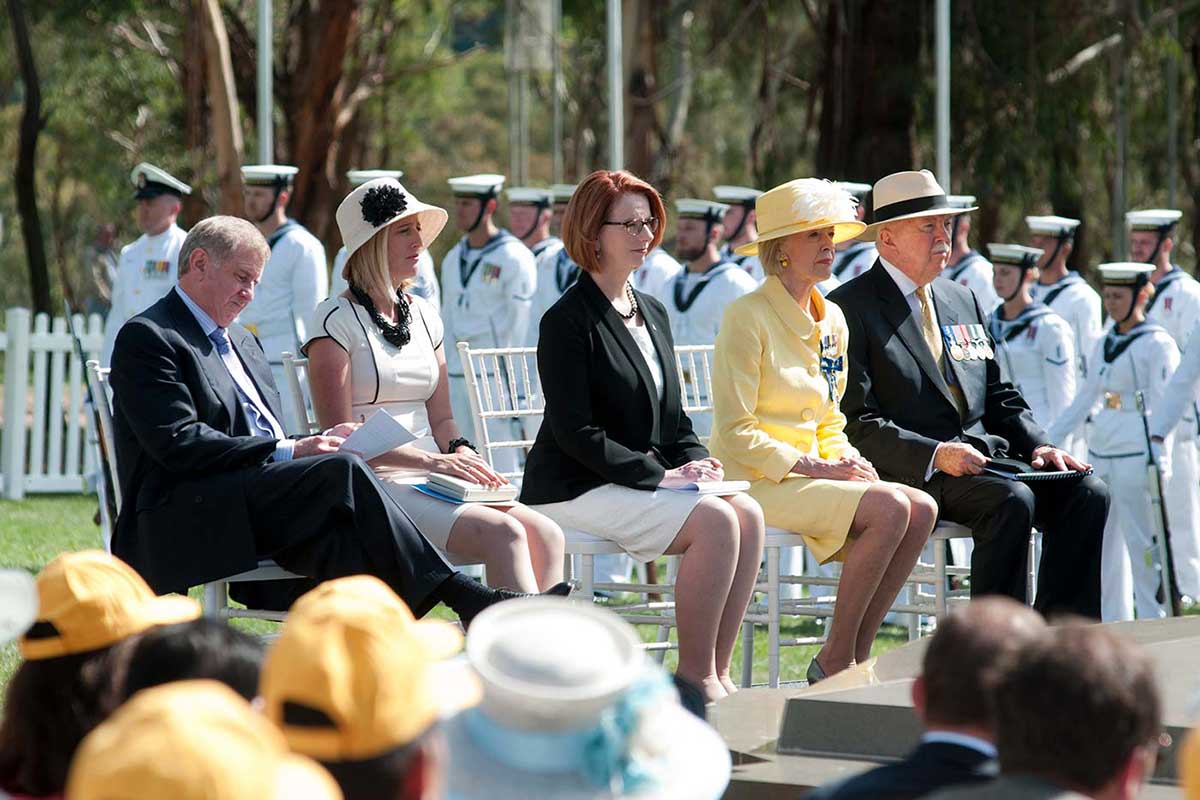On 24 June 2010 the 25th and first female governor-general of Australia, Her Excellency Ms Quentin Bryce AC, swore in the 27th and first female prime minister, Ms Julia Gillard.
This day marked a milestone in Australian politics with women filling the two highest positions in the nation, 116 years after women first obtained the vote in South Australia.
The Honourable Dame Quentin Bryce AD CVO, 26 September 2014:
For me, for my generation, it was a time to pause, to acknowledge a milestone of magnitude in our history … I could never have imagined at the time of my own swearing in or that of Prime Minister Gillard the extent of the political turmoil that lay ahead … It won’t be the same for the next woman. Tough, yes … but not as tough. There is nothing like being the first.
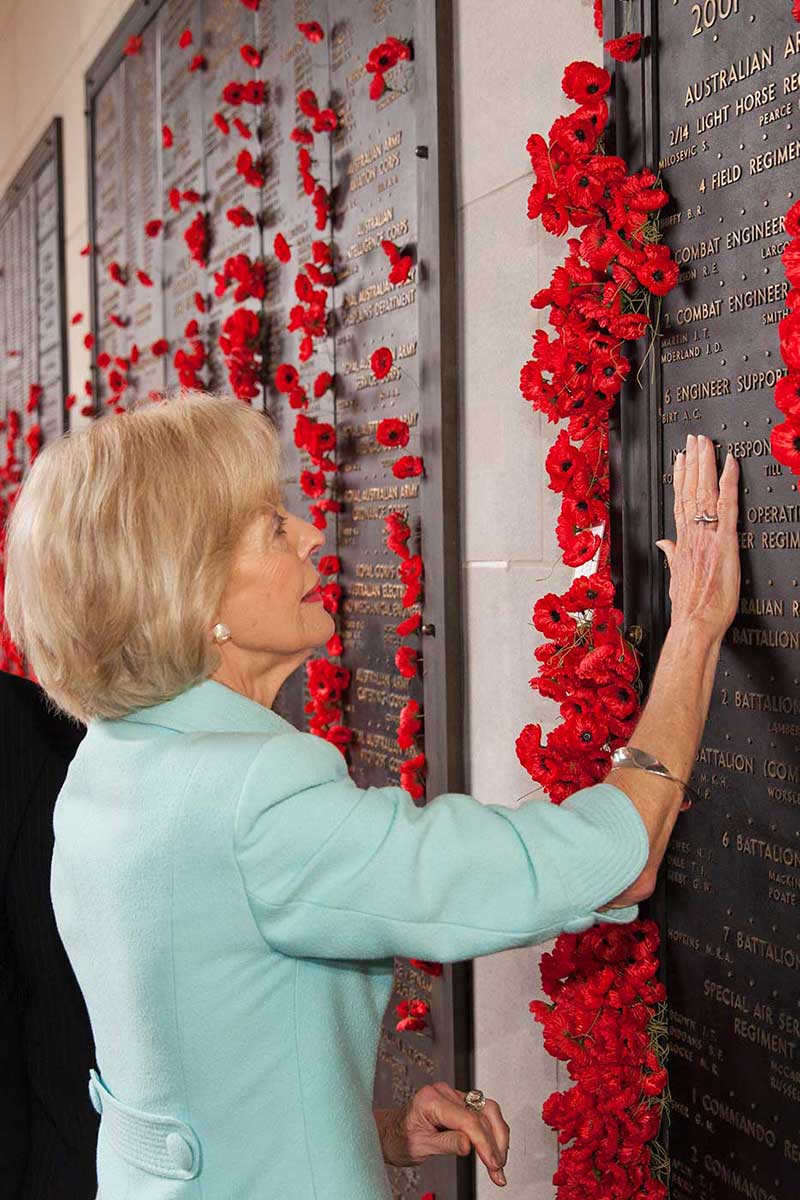
Female governor-general
Dame Quentin Bryce was born in Brisbane and raised in country Queensland. She graduated from the University of Queensland with bachelor’s degrees in Arts and Laws in 1965 and became one of the first women in Australia to be admitted to the Queensland Bar.
Quentin Bryce is well known for her contributions to human rights, gender equality and family welfare. She was appointed an Officer of the Order of Australia (1988), a Companion of the Order of Australia (2003) and a Dame in the Order of Australia (2014).
Before being appointed governor-general, Bryce held many distinguished positions, including Director of the Australian Human Rights and Equal Opportunity Commission and federal Sex Discrimination Commissioner. She was appointed Governor of Queensland in 2003.
In 2008, owing to her outstanding record of achievement and contribution to Australia, Dame Bryce was nominated for the role of governor-general. When she was sworn in on 5 September that year, she became the first female to serve in the position.
Female prime minister
Born in Wales in 1961, Julia Gillard emigrated to Australia with her family in 1966. In her early years, Gillard was strongly influenced by the progressive ideals of her parents.
This led her to become a member of the Australian Labor Party (ALP) in 1979, while at the University of Adelaide. She also joined the Australian Union of Students, eventually moving to Melbourne as its vice-president (and later national president).
Graduating from the University of Melbourne with bachelor’s degrees in Arts and Laws, Gillard worked for the law firm Slater and Gordon before being elected to the House of Representatives as the Labor Member for Lalor in 1998.
During Labor’s period of political opposition during the Howard years, Gillard held many positions within the party, including various shadow ministries. She was elected deputy leader of the Labor Party under Kevin Rudd in 2006. When Labor won the federal election the next year, she became the first female deputy prime minister of Australia.
In 2010 a party room challenge resulted in Rudd losing the Labor leadership and Julia Gillard being elected in his place. Subsequently, on 24 June, Governor-General Quentin Bryce swore her in as the first female prime minister of Australia.
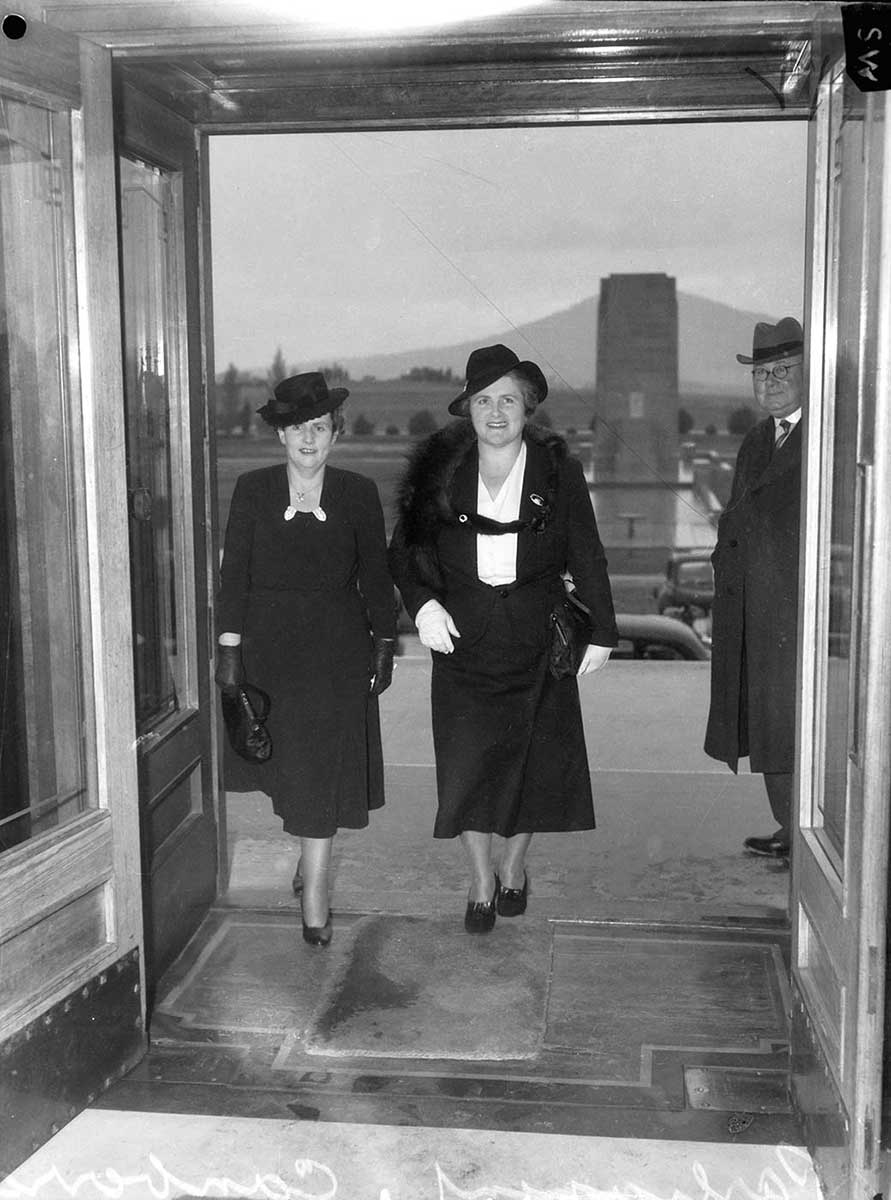
Women in politics
The date of Gillard’s swearing-in marked a significant milestone in Australian politics.
One hundred and sixteen years after women were given both the right to vote and the right to stand for parliament (in South Australia in 1894), two women held the highest offices of the country at the same time.
Australia was one of the first nations in the world to allow women to vote federally and stand for election to parliament.
However, it was a long time between the introduction of state and federal voting legislation and women receiving representation in either level of government.
The first woman in any Australian parliament was Edith Cowan, elected in Western Australian state elections in 1921, 22 years after female suffrage was introduced in the state. Not until 1943 did women enter federal parliament, with Dorothy Tangney and Enid Lyons elected to the Senate and House of Representatives respectively.
The first woman to lead an Australian state or territory government was Rosemary Follett, who became the Australian Capital Territory’s first chief minister in 1989. Carmen Lawrence became the first female state premier when elected in 1990 in Western Australia, and the first female state governor was Dame Roma Mitchell in South Australia, appointed in 1991.
The swearing-in of Julia Gillard marked 67 years between the first women entering federal politics and Australia’s first female prime minister.
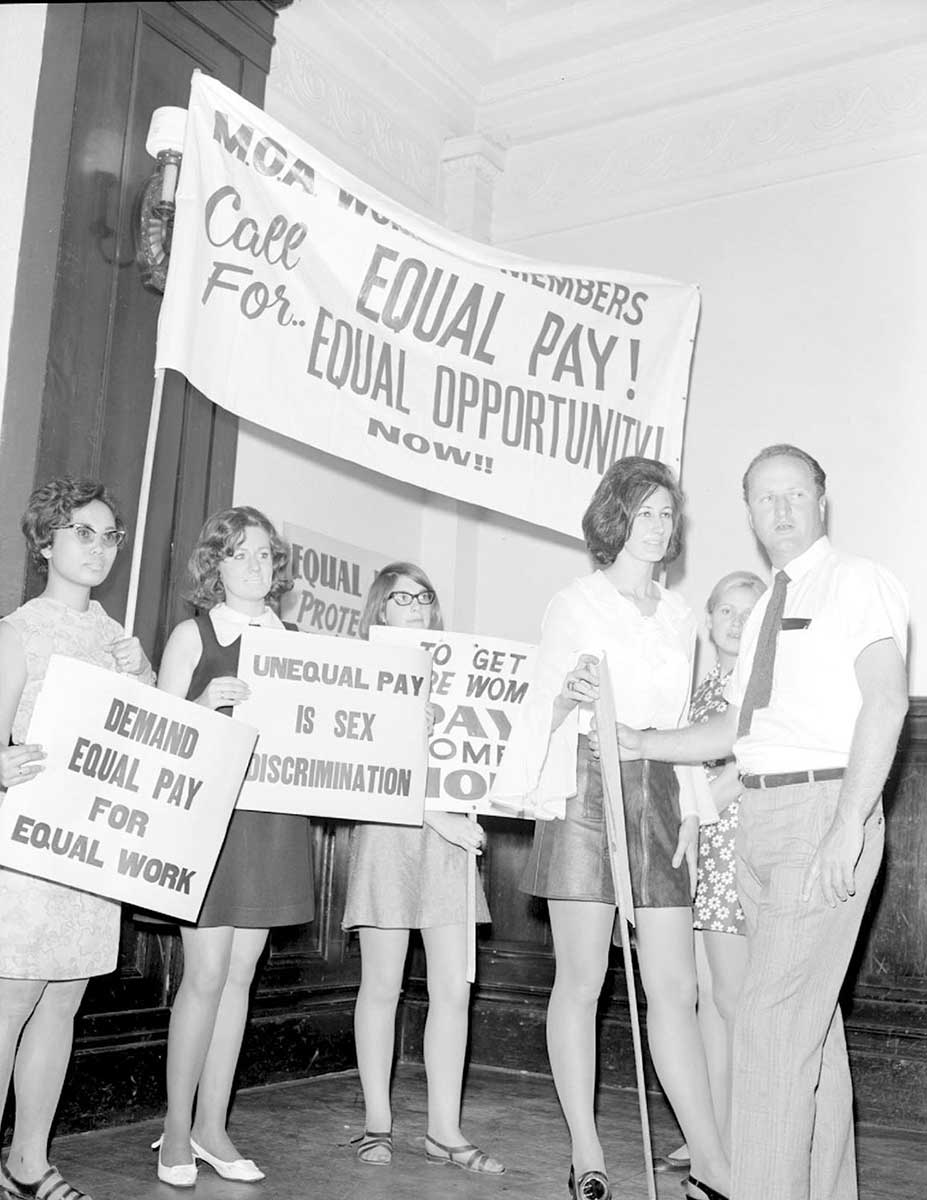
Women in political and public life
The swearing-in ceremony on 24 June 2010 served as a reminder of how far women had come in Australian politics and public life, and of the long journey towards female leadership at the highest levels. But it also highlighted a disparity in women’s representation in public life.
Despite the Commonwealth Conciliation and Arbitration Commission having awarded equal pay for work of equal value in 1972, women are still paid on average 11.5 per cent less than men and in 2025 only 39 per cent of board positions in the top 100 companies in the Australian Stock Exchange were held by women.
Following the 2025 federal election, the number of women in parliament was close to parity. Women made up 56 per cent of the ALP’s ranks and outnumbered men in both the House of Representatives and the Senate.
No women have become prime minister since Julia Gillard, however Sam Mostyn became Australia’s second woman governor-general in 2024. Sussan Ley became Liberal Party and opposition leader in May 2025.
In our collection
References
Australian Bureau of Statistics, The ABS gender pay gap
Australian Institute of Company Directors, Australia’s top boards close to 40% women
Biography – Honourable Dame Quentin Bryce AD CVO
Parliament of Australia, Gender composition of Australian parliaments by party
Julia Gillard, My Story, Random House Australia, Milsons Point, NSW, 2014.
